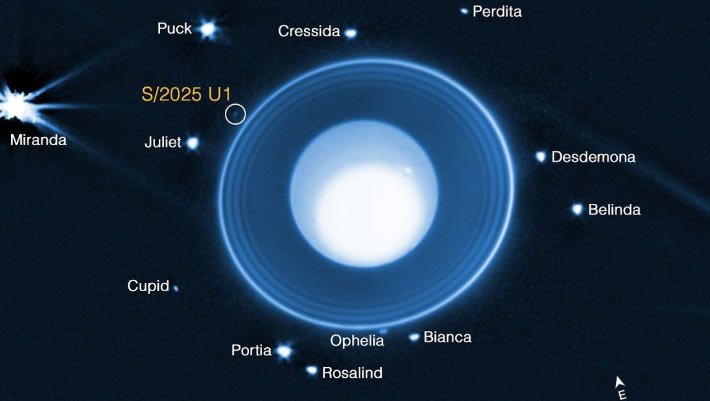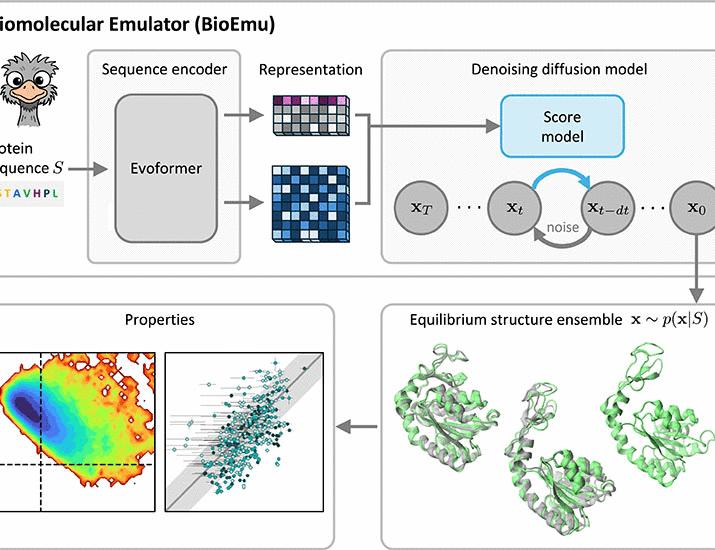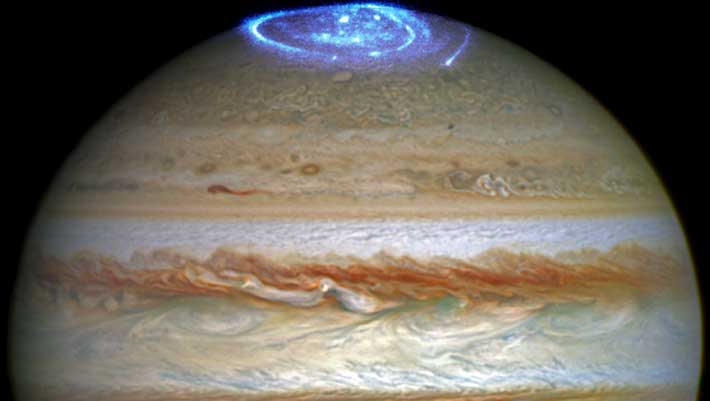Now Reading: Webb Telescope Finds Hidden Moon Orbiting Uranus
-
01
Webb Telescope Finds Hidden Moon Orbiting Uranus
Webb Telescope Finds Hidden Moon Orbiting Uranus

Quick summary:
- Using the James Webb Space telescope, astronomers discovered Uranus’ 29th moon, provisionally named S/2025 U 1.
- This discovery was made on February 2, 2025, utilizing Webb’s Near-Infrared Camera (NIRCam) during long exposure imaging under its guest observer program.
- S/2025 U 1 is approximately 10 km (6 miles) in diameter and located close to Uranus’ inner rings,about 56,250 km (35,000 miles) from the planet’s center.
- The newly found moon is situated between the orbits of two other small moons: Ophelia and Bianca.
- Ophelia (~43 km in diameter) and Bianca (dimensions ~64×46 km) are larger than S/2025 U 1; this new moon is thus far the smallest among Uranus’ inner moons system.
- Dr. Maryame El Moutamid noted that Voyager 2 did not detect this object during its flyby nearly four decades ago despite its proximity to Uranus.
- Dr. Matthew Tiscareno highlighted that no other planet has as many small inner moons integrated into intricate relationships with ring systems.
Indian Opinion Analysis:
The discovery of S/2025 U 1 as part of advanced space exploration demonstrates humanity’s growing ability to probe celestial bodies remotely at extraordinary levels of detail. For India-one of the leading emerging players in space research-the scientific applications are extensive. The James Webb Space Telescope exemplifies engineering complexity and international collaboration among NASA / ESA / CSA-models for joint efforts that Indian agencies like ISRO could further emulate or join on global exploratory missions.
This breakthrough reveals potential gaps even in data sourced from iconic missions like Voyager-a reminder about technological progression reshaping our understanding over time. India’s ongoing pursuit to develop deep-space imaging capabilities could benefit by incorporating advancements allowing better investigations into planetary dynamics shaped by rings and satellite interactions akin to Uranus’ chaotic system. Additionally, discoveries like these exemplify opportunities for interdisciplinary studies linking astronomy with geophysics-contributing insights relevant not just globally but regionally for institutions steering similar science goals here.

























